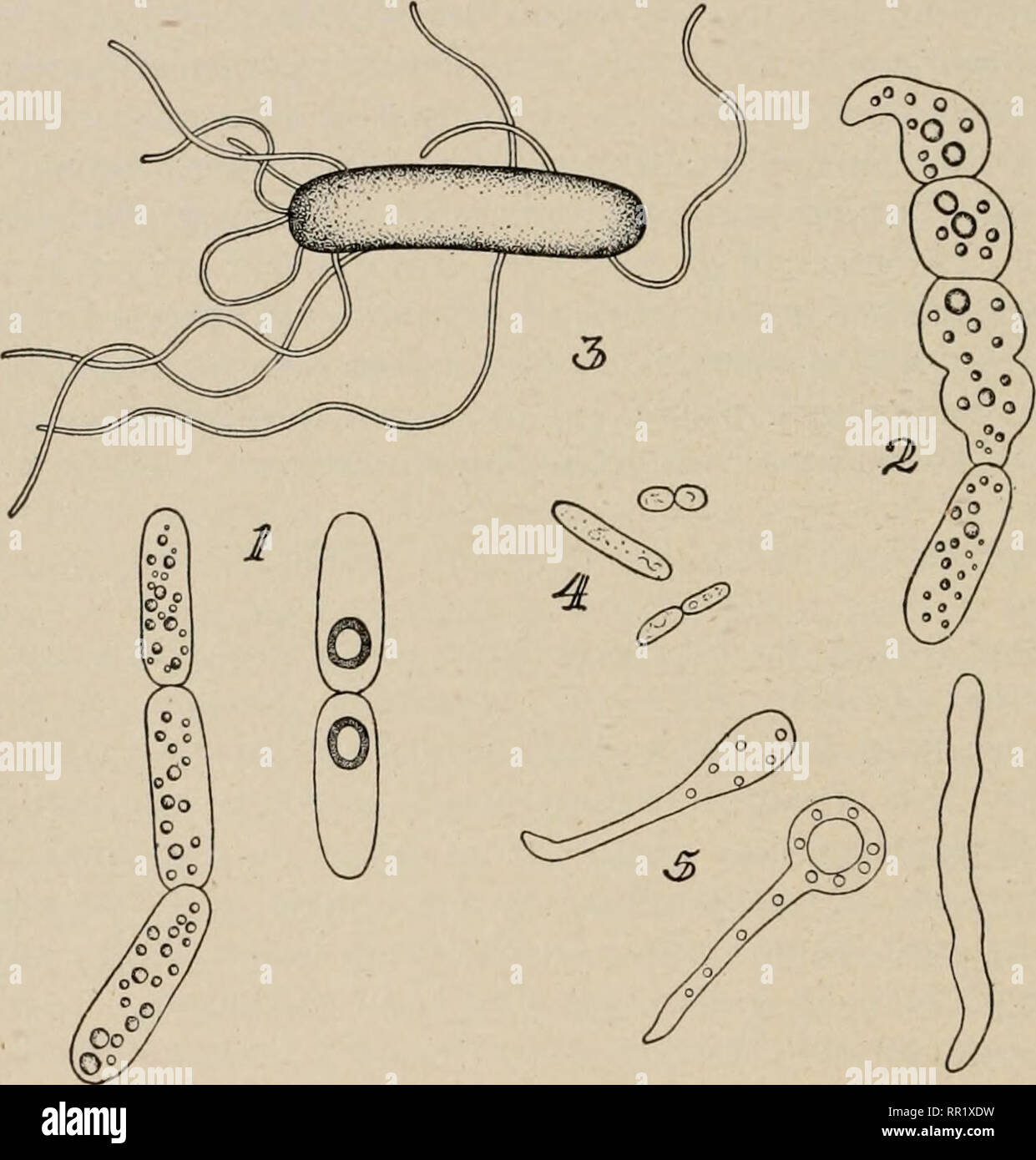. Agricultural bacteriology. Bacteriology, Agricultural. 196 AMMONIFICATWN by Sarcina lutea and B. mycoides, respectively, in twelve days at temperatures between 27° C. and 30° C, while Marchal only obtained similar transformation in thirty days at 30° C. in albumin solutions." Species and Distribution.—As was pointed out by Marchal, the ammonifying organisms are very widely distributed in nature. The power to split off ammonia from protein is a characteristic of the majority of soil bacteria. Gage noted the production of ammonia in thirteen out of twenty cultures of sewage bacteria teste

Image details
Contributor:
Library Book Collection / Alamy Stock PhotoImage ID:
RR1XDWFile size:
7.2 MB (216.4 KB Compressed download)Releases:
Model - no | Property - noDo I need a release?Dimensions:
1545 x 1618 px | 26.2 x 27.4 cm | 10.3 x 10.8 inches | 150dpiMore information:
This image is a public domain image, which means either that copyright has expired in the image or the copyright holder has waived their copyright. Alamy charges you a fee for access to the high resolution copy of the image.
This image could have imperfections as it’s either historical or reportage.
. Agricultural bacteriology. Bacteriology, Agricultural. 196 AMMONIFICATWN by Sarcina lutea and B. mycoides, respectively, in twelve days at temperatures between 27° C. and 30° C, while Marchal only obtained similar transformation in thirty days at 30° C. in albumin solutions." Species and Distribution.—As was pointed out by Marchal, the ammonifying organisms are very widely distributed in nature. The power to split off ammonia from protein is a characteristic of the majority of soil bacteria. Gage noted the production of ammonia in thirteen out of twenty cultures of sewage bacteria tested. FIG. 27.—Ammonifying bacteria.—1. Bacterium mycoides; X 3, 000. (Nadson.) 2. Bacterium mycoides; involution forms; X 3, 000. (Nadson.) 3. Bacterium tumescens. (Myer.) 4. Proteus vulgaris; X 3, 000. (Nadson.) 5. Proteus vul- oaris; involution forms; X 3, 000. (Nadson.) (Lipman's "Bacteria in Relation to Country Life.") by him. He further found that the gelatin liquefiers have an ammonifying power nearly twice as great as the non-liquefiers. Chester found all but one of the organisms tested by him capable of producing ammonia. C. B. Lipman tested the following fifteen organisms in soils: B. mesentericus mdgatus, Ps. putida, B. mdgatus, B. megatherium, B. mycoides, B. snltilis, B. tumesccns, Sarcina lutea, B. proteus vulgaris, B. icteroides, B. ramosus, Streptothrix, sp., /'.v. jluorcscens, B. wilgarix (navy strain), and Mic, tetragenus as to their ammonifying powers of dried blood, tankage, cotton-seed. Please note that these images are extracted from scanned page images that may have been digitally enhanced for readability - coloration and appearance of these illustrations may not perfectly resemble the original work.. Greaves, J. E. (Joseph Eames), b. 1880. Philadelphia New York, Lea & Febiger